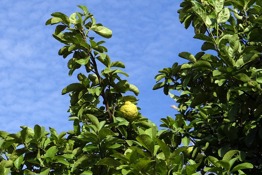Handling shemitah food in the public kitchen

Guidelines for the public kitchen. What should the owner of a wedding hall do if shemitah fruits and vegetables are also served? Chapter 20 of the Consumer's Guide to Shemitah.
A. Introduction
- In public places and various institutions, the issue of food scraps with shemitah sanctity is quite complex. However, one should nevertheless purchase sacred produce for this reason: buying sacred shemitah produce strengthens the farmers, who are the ones who shoulder the lion's share of the struggle with the mitzvah of shemitah.
- Since public kitchens large quantities of processed foods, one should make advanced preparations and designate large receptacles for sacred shemitah One should verify that these containers are also approved by the Ministry of Health Guidelines for leftover food.
B. Processing fruits and vegetables in the kitchen
- It is permissible to peel fruits and vegetables as usual. The peels that are still worthy of human consumption should be kept in the shemitah bin for several days.[1] Each day's scraps should be stored in a separate bin, and should not be mixed in with the scraps of a previous day to avoid accelerating the rotting process. Subsequently, they can be thrown away in the regular garbage bin.
- It is permissible to process all sorts of fruits and vegetables that are generally processed.
- We advise planning a menu that exploits all parts of the fruits and vegetables and minimizes waste.
- There is no problem with mixing shemitah and non-shemitah produce or cooked dishes, as long as the shemitah food is not spoiled or negatively impacted by this mixture.[2]
C. Washing dishes and utensils
- One may wash processing utensils, dishes, and cutlery as usual.
- Nevertheless, leftover shemitah food scraps—even when mixed together with non-sacred scraps—should be placed in the designated shemitah bin.
D. Leftovers
- The best method, in terms of both halachic and educational considerations, is to notify diners about which fruits and vegetables have shemitah A container should be placed in the center of the table, where diners are requested to leave only leftovers of the shemitah fruits and vegetables.
- If the diners are not careful and fail to leave their shemitah scraps in the designated container, these leftovers should be placed in the designated shemitah bin (as much as possible). The rest of the waste should be thrown in the garbage.
[1] While in private kitchens we advise waiting a week, in public kitchens where this is not feasible, we are lenient and rule that only several days are necessary.
[2] See Shabbat Ha'aretz 5:3 §7.




